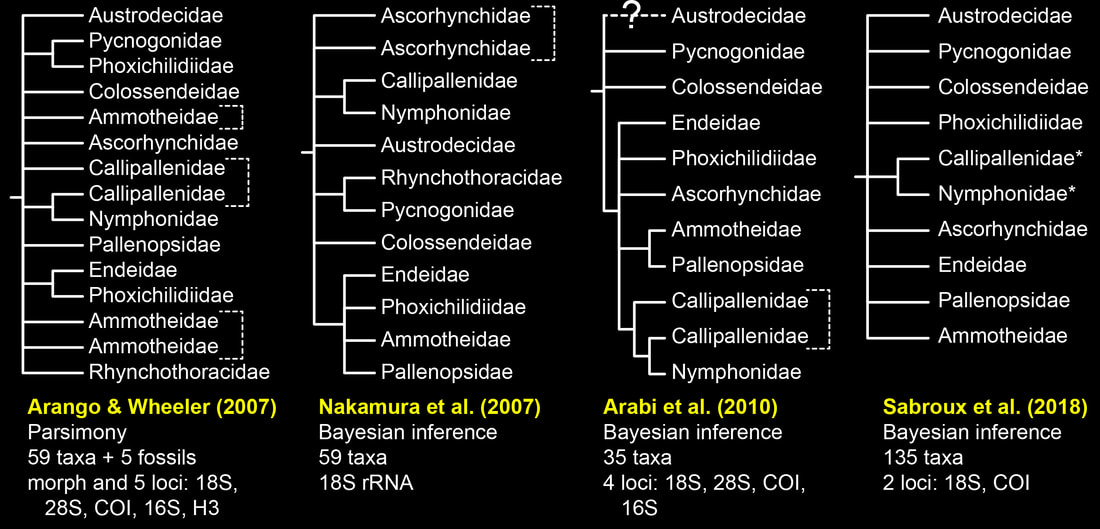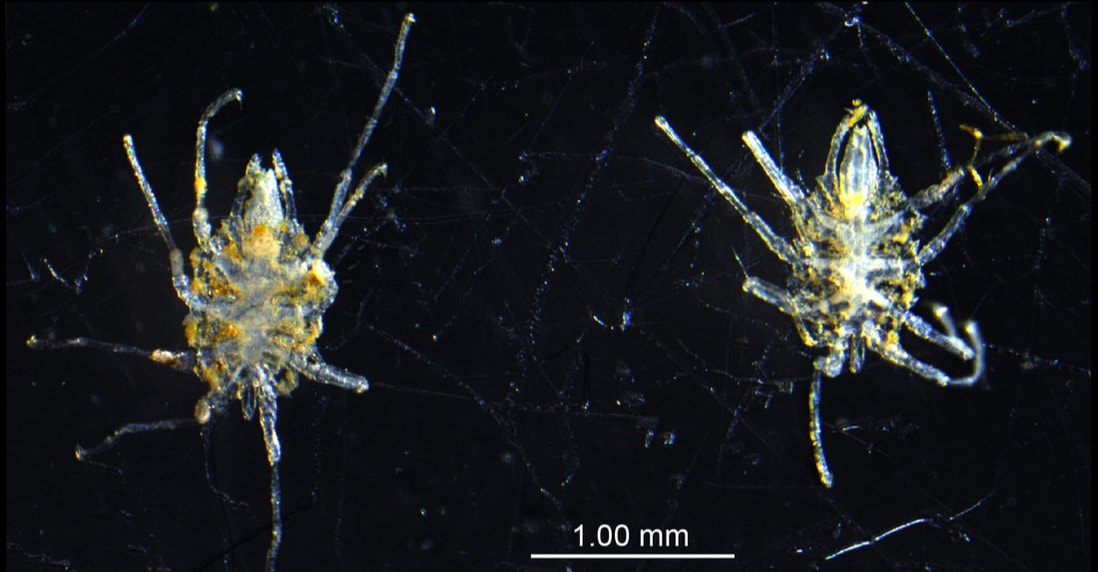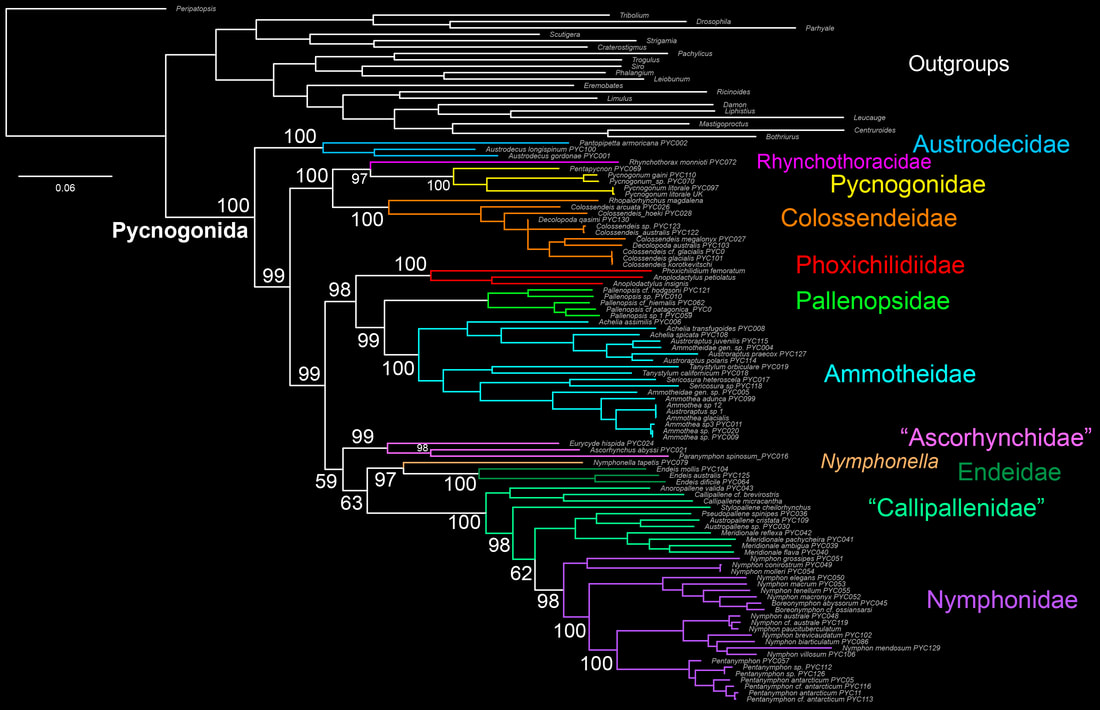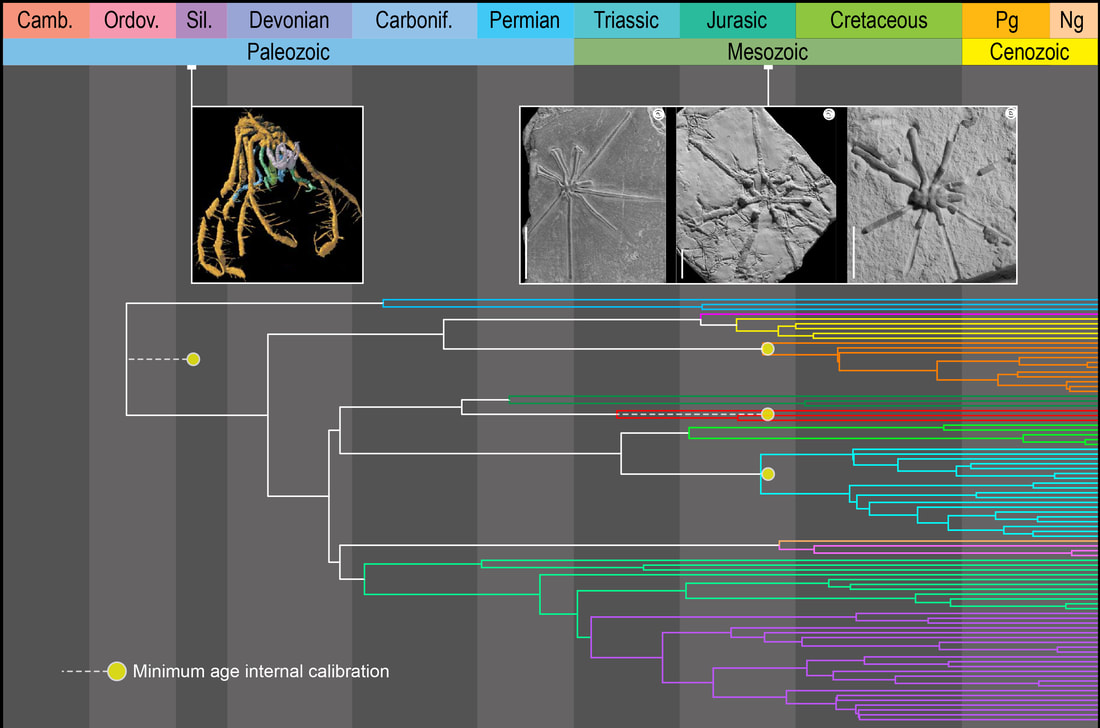Sea spider phylogenomics
The phylogeny of Pycnogonida (sea spiders) has been historically challenging for morphological and molecular phylogenetic datasets. Due to peculiarities of sea spider anatomy (e.g., their digestive system extending into the legs), these animals are highly prone to contamination.
Many family-level lineages are also minute in size and rare in nature, which has made a higher-level phylogeny of sea spiders an elusive goal. Examples of such taxa are Austrodecidae and Rhynchothoracidae.
To surmount these challenges, we recently deployed a target capture approach that aimed to sequence mitogenomes, ultraconserved elements, and a small number (n=56) of conserved exons that we anticipated could be reliably sequenced across all sea spider families. The result was the first phylogenomic study of sea spider relationships, which resolved for the first time the backbone phylogeny of Pycnogonida.
Leveraging the fossil record of sea spiders, we were able to provide a temporal context to their history of diversification. Our molecular dating analyses indicated that crown group sea spiders are ancient, with the youngest estimates placing the basal diversification in the Ordovician.




